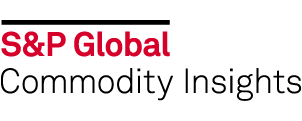
Download Report IHS CEH Report : Urethane Surface Coatings (Chemical Economics Handbook 2019)
PDF by S&P Global Commodity Insights; IHS Markit
Information
Format: PDF Language: English Pages: 109 Publisher: S&P Global Commodity Insights; IHS Markit Publitshion date: 2019 ISBN: 133083
$49
Delivery time: Maximum 24 hours
Description
Perhaps the most important issue facing the urethanes coatings industry in 2019 is dealing with rising prices for HDI. Prices for HDI rose by 10–15% in 2018 and continue to rise in 2019. Much of the increase is attributed to increases in prices for hexamethylene diamine (HMDA) feedstocks. HDMA is derived from adiponitrile (ADN), which has been affected by tightening global supplies ever since a major explosion occurred at the Shandong Runxing plant in China in 2015. Global spot prices for ADN rose by about 50% from early 2018 to early 2019. Little relief is expected until 2020 when the ADN industry is expected to have installed more capacity. Most ADN/HMDA is used to make caprolactam for nylon 6 production, which is a much more important outlet than HDI.
Urethane coatings have been one of the fastest-growing sectors of the worldwide paint and coatings industry. Despite the relatively high cost, their excellent durability, resistance to corrosion and abrasion, pleasing optical properties, and flexibility make urethane coatings suitable for a range of high-performance applications. Urethanes are also finding greater appeal in recent years because of the ability to formulate coatings with lower organic solvent contents.
In 2018, about 1.47 million metric tons of polyols and isocyanates were consumed for urethane coatings. China accounted for about 40% of the total, followed by EMEA (23%) and North America (15%). During 2012–16, there was good consumption growth in all regions, followed by some leveling in 2017–18. Future consumption growth for urethane coatings will likely be about 4% per year, while the total coatings market will increase at about 2–3% per year. The majority of growth will take place in Asia Pacific, Africa, and the Middle East, with lesser growth in the mature North American, Western European, and Japanese markets.
The largest markets for urethane coatings are automotive OEMs and refinishing (23% of the global total in 2018), followed by construction (16%), other transportation (14%), anticorrosion coatings (13%), and wood and furniture (10%). In the industrialized world, growth in urethane coatings has slowed in recent years. In 2018, the end-use markets with the weakest demand for urethane coatings were anticorrosion coatings (principally the marine and oil and gas sectors) and vehicle refinishing.
Probably the biggest challenge facing the industry is raw material pricing. Prices of hexamethylene diisocyanate (HDI), the most important light-stable aliphatic isocyanate used, have risen sharply in response to short supplies of feedstock hexamethylene diamine (HMDA), which in turn is derived from adiponitrile (ADN). ADN supplies have tightened considerably since an explosion occurred at Shandong Runxing plant in China in 2015.
$49
Delivery time: Maximum 24 hours
